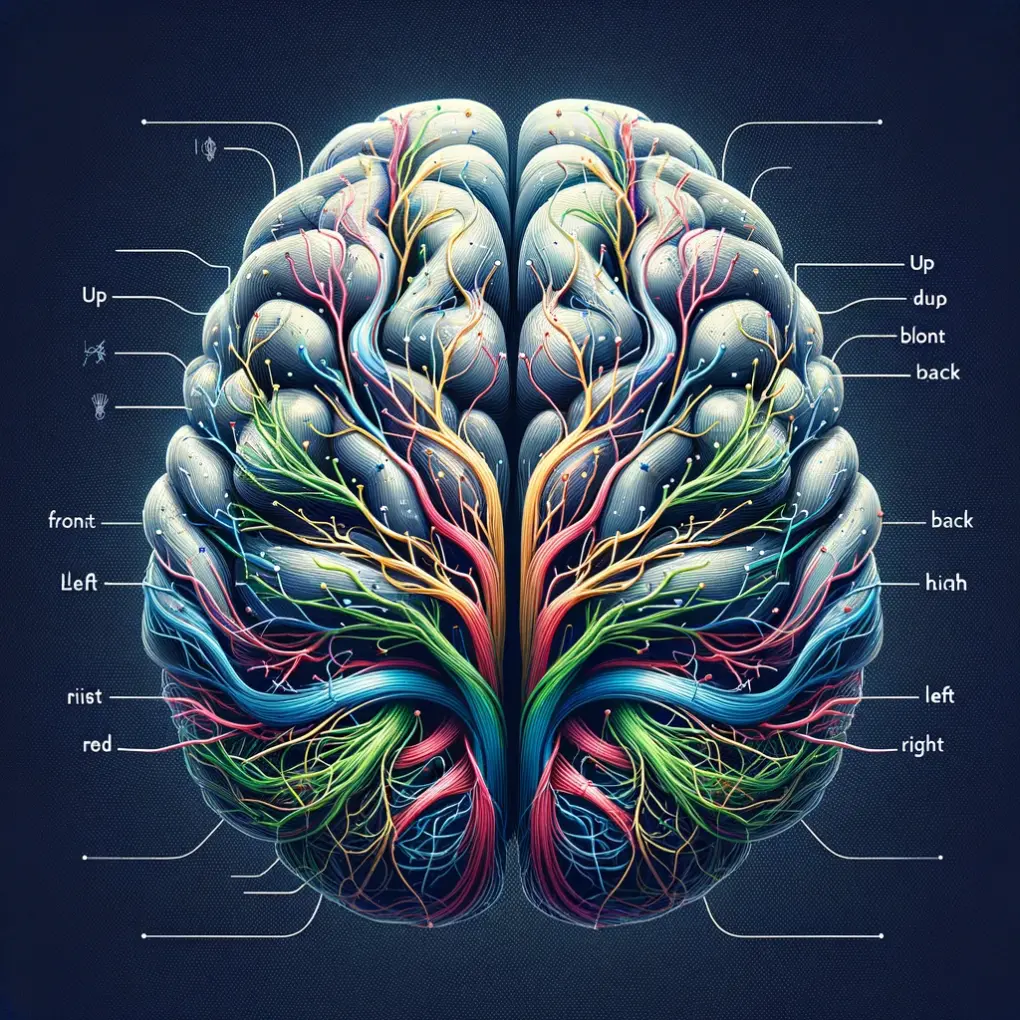BWRT®

BWRT®’ stands for ‘BrainWorking Recursive Therapy®’, a modern model of psychology and psychotherapy created by UK professional therapist, Terence Watts, MCGI. It uses a totally logical, practical and down-to-earth working method in which it’s not necessary for you to talk about anything you would rather not discuss – the practitioner only needs to know how you feel and how you would prefer to feel instead. BWRT® is unlike any other therapy you might have heard of or read about, using the latest discoveries in neuroscience coupled with your own unique brain processes to help you get better. Only Certified Practitioners have been trained to deliver BWRT® and all have to adhere to a strict ethical code. Find out more at http://www.bwrt.org
What is Brain Working Recursive Therapy® (BWRT)®?
There is an amazing connection between BWRT®, Benjamin Libet and Viktor Frankl.
Between stimulus and response there is a space. In that space is our power to choose our response. In our response lies our growth and our freedom – Viktor Frankl.
Connection with Libet’s Theory on Free Will:
Benjamin Libet’s research in neuroscience suggested that while the initiation of actions occurs unconsciously, humans have a ‘veto’ power or as Terence Watts (BWRT Genius) calls it ‘free won’t’ — a brief period where conscious intervention can stop the action. This aligns with Frankl’s concept of a space between stimulus and response. Libet’s theory implies that even if initial impulses aren’t under conscious control, we have the conscious ability to choose how to respond. This echoes Frankl’s idea that our power and freedom lie in choosing our responses, aligning with the notion of free will.
BWRT and Overcoming Stress, Anxiety, and Depression:
In summary, both Libet’s theory and BWRT underscore the importance of the space between stimulus and response, where individuals have the power to choose their responses, which is crucial for personal growth and freedom.
The Genius Behind BWRT® – Terence Watts.
BrainWorking Recursive Therapy (BWRT) is a relatively modern form of psychotherapy that focuses on addressing and changing unwanted emotional and behavioural responses. A revolutionary model of psychology and psychopathology that is in line with contemporary neuroscience thinking and is the innovation of Terence Watts (MCGI)
BWRT is designed to be a brief and effective therapy that helps individuals overcome a wide range of psychological issues. It consistently focuses on finding solutions and the fact that it is unique, wholly scientific, and operates quite differently from slower therapies like CBT, counselling, hypnosis, or similar is maybe its most significant feature.
Terence Watts talking about Brain Working Recursive Therapy
Old styles of therapies vs BWRT®
BWRT (BrainWorking Recursive Therapy) works by rerouting the brain’s natural response to distressing stimuli, replacing negative patterns with positive reactions for long-term self-improvement and mental health benefit
“Most modern therapies, such as BWRT®, seek to achieve rapid and lasting change by using neuroscience to change your response to events and situations, while the older therapies usually explore the problem slowly and repeatedly while looking for a solution.”
Terence Watts (MCGI).
How does BWRT® Work?
Brain Working Recursive Therapy (BWRT) offers several notable benefits as a modern model of psychology and psychotherapy. One of the key advantages of BWRT is its speed and efficiency in addressing various psychological issues. Typically, it requires only 1-2 sessions to effectively treat conditions like phobias, anxiety, and neurosis, making it a cost-effective therapy option. BWRT is particularly effective in dealing with anxiety-related issues, past trauma, Generalized Anxiety Disorder (GAD), social phobia, panic attacks, Post-Traumatic Stress Disorder (PTSD), Obsessive-Compulsive Disorder (OCD), low self-esteem, and more. Additionally, its ability to quickly cut off old emotional responses to issues allows individuals to regain control over their emotional state, leading to significant improvements in mental health and overall well-being.

Is BWRT® right for me?
Anyone who wants to work on a problem but is uncomfortable revealing their past or is unable to do so since it would be too traumatic for them is a suitable candidate for BWRT. BWRT does have the advantage that it enables you to work through painful previous experiences without ever having to discuss them or even inform your therapist about them. All they need to know is what you want to work on, like “I worry all of the time.”
Determining whether BrainWorking Recursive Therapy (BWRT) is right for you depends on your specific needs, preferences, and the nature of the issues you’re facing. Here are some considerations to help you determine if BWRT might be a suitable therapeutic approach for you:
Is BWRT too good to be true?
That’s what many people believe – but they’re completely, totally, 100% WRONG!
The reason they make the mistake is that they think about how other therapies work and decide that BWRT cannot be much different and therefore it’s all hype!
But it’s not hype, and you cannot assess BWRT by comparing it with other therapies, because those other therapies all work in a style that was created more than 130 years ago. That style is to try to get past conscious thought and reasoning into ‘the subconscious’. They work but it takes time, and the conscious mind often gets in the way, creating what therapists usually call ‘resistance’.
BWRT is different. It uses natural brain processes to get straight to work with the part of the nervous system where all problems originate – and because of this, conscious thought and reasoning aren’t part of the therapy and cannot get in the way.
If you think of a nervous symptom like anxiety as being the product of an electrical circuit (it actually is!) then other therapies seek to turn off the switch… but BWRT completely shuts down that part of the generator so it can’t start up again.
So, the problem is no more. There’s no need to manage the symptom by tapping, breathing in a special way, thinking a special thought, pinching thumb and finger together or any other coping strategy – the problem is gone. Absent. Finished. For good.
In the nine years since it was first taught, BWRT has become the therapy of choice for thousands of practitioners that include psychiatrists, psychologists, counsellors and many other psychological health practitioners around the world.
They’ve all discovered that far from being too good to be true, BWRT genuinely ‘does what it says on the tin’!
Source: Terence Watts

“Many ‘symptoms’ are the result of a behaviour or thought pattern ‘firing up’ that has been activated before. It might actually have been suitable or effective at one time but the fact that it isn’t now is of no consequence to the non-reasoning part of the brain. BWRT makes it possible, via a simple technique, to create a new response pattern to any stimulus so that the action the brain triggers is one that we want.” – Terence Watts (MCGI)
How Can BWRT Help You?
- Addictive Behaviour
- Alcoholism
- Anger Issues
- Anxiety and anxiety disorders
- Binge Eating & Drinking
- Bullying
- Confidence
- Childhood trauma
- Depression
- Driving Test and Exam Nerves
- Eating Disorders
- Fear of Authority
- Fear of Failure
- Gambling
- Generalised Anxiety Disorder (G.A.D.)
- Grief
- Habits & Behaviours
- Health anxiety
- Identity issues
- Imposter Syndrome
- Loneliness
- Motivation & Procrastination
- Obsessive Behaviour
- OCD
- Performance Anxiety
- Performance Enhancement
- Phobias, Fears & Anxiety
- PTSD – Post Traumatic Stress Disorder
- Relationship Issues
- Self-Worth & Self-Confidence
- Sexual Issues
- Social Phobias
- Stress
- Substance Abuse
- Success Inhibition
- Sleep issues
- … and more
BWRT®FAQ’s
Q. Book a 15-Minute Discovery Call
Kim Barden offers a 15-minute free discovery call. This can be an excellent opportunity to discuss your needs and learn more about how her therapies can help you!
Q. How to book a session with Kim
To book a session with Kim Barden, a therapist specializing in Hypnotherapy and Brain Working Recursive Therapy (BWRT), you can follow these steps:
-
Book a Discovery Call: Kim Barden offers a 15-minute free discovery call. This can be an excellent opportunity to discuss your needs and learn more about how her therapies can help you.
-
Schedule Your Session: After the initial consultation, if you decide to proceed, you can schedule your therapy session. The details of how to book a specific session might be discussed during the discovery call or found on her website.
-
Personalised Approach: Remember that Kim Barden tailors sessions to individual needs, ensuring a more personalized therapeutic experience.
For more detailed information or specific queries, you may contact Kim directly through WhatsApp: 07771 631 614
Q: What happens in a session?
A: After getting some details, Kim will explain how BWRT works. You briefly tell Kim what it is you want to work on and then it’s on to the therapy itself. You will then be asked to close your eyes and the Kim will talk you through different visualising and sensing processes, and you simply follow her voice and instructions as best you can. You might, for example, be asked to picture the situation that upset you, the way you would have liked the situation to go, yourself in an ideal future, or different parts of your brain lighting up, amongst other things. (It might sound and indeed feel strange, but there is an exact order and speed to all of it that gets below conscious thought).
In a Brain Working Recursive Therapy (BWRT) session, which typically lasts about an hour, the Kim works closely with you to identify and address specific issues. The core of BWRT lies in replacing unhelpful automatic response patterns in the brain with more beneficial ones. This is achieved by targeting specific behaviors or emotional responses that the client wishes to change. During the session, Kim will guide you to focus on these target areas and uses a BWRT protocol to reroute the brain’s natural response. This process involves inducing a ‘synthetic’ version of the brain’s ‘Freeze’ response therapeutically and without trauma. The aim is to stop and redirect the brain’s response to anything traumatic or misunderstood, thereby preventing negative emotional reactions and creating a long-lasting positive change in behavior and thought pattern
Q: Are all practitioners properly trained?
A: Yes, they are, and if not by Terence Watts, the creator of the process, then by somebody who trained directly with him. Many go on to become fully registered with The Terence Watts BWRT Institute (https://www.bwrt.org) which means they have to maintain continual professional development. But everybody listed on this site has received the full training, and all have to have received training in ‘standard’ therapy before they can study BWRT®.
Q: Do I need a doctor's referral
A: No – but if there is a possibility that your presenting situation could be caused by a physical illness, your practitioner may need to contact your doctor. This is to ensure we do not mask anything that needs treatment with conventional medicine.
Q: How many sessions will I need? I don't have a lot of money.
A: One of the great things about BWRT® is its speed. Often, a single session is sufficient to resolve your problems. It’s extremely rare for there to be a need for a high number of sessions. Even in more serious situations such as addictions, this is still one of the fastest therapies ever.
Q: Is it the same as hypnotherapy?
A: No. A trained hypnotherapist might also be interested in and offer BWRT®, given that they both aim to retrain your mind. But hypnotherapy puts you into a deeply relaxed state so your unconscious becomes accessible. BWRT® doesn’t hypnotise or aim to relax you, it induces a mental ‘freeze state’ (distracting you temporarily from conscious thought) to reprogram your ‘Reptilian brain’ patterns.
Q: Does BWRT® last?
A: Yes! When your problem is resolved with BWRT® it generally stays resolved. On rare occasions, there is a partial return, it can be easily dealt with.
Q: Does BWRT® always work?
A: Unfortunately, there’s not a therapy in the world that can make that claim but BWRT® comes close. Only very rarely does it not do just as we claim.
Q: I’ve had problems for a very long time – will that hinder the therapy?
A: Not in the least! The brain doesn’t ‘do’ time so it doesn’t matter how long a problem has existed… BWRT® works with the part of the brain before symptoms are created. Problems that are thirty years old can be resolved just as quickly as if they started only a month or so ago.
Q: Will I have to relive my fears?
A: No – BWRT® isn’t used like that. In fact, the practitioner doesn’t even have to know what your exact fear is. You might only say something like: “I have these panic attacks…” and that’s all the practitioner needs to know.
Q: Do you have to be really ill before this therapy works?
A: Not at all! BWRT® can help in all manner of uncomfortable situations and conditions. The best thing is to talk to a practitioner who will be happy to discuss your needs in detail. If there’s a possibility that your symptom is caused by physical illness, your practitioner may want to ensure that you have consulted with a GP or consultant.
Q. Is it dangerous?
Q. Will I lose consciousness during the BWRT procedure?
Q: Are there any unpleasant side effects?
A: There are no lasting unwanted side effects. Some people feel slightly ‘disconnected’ for a few seconds – no longer – as the brain lets go of the problem at the end of the session.
Q: Can BWRT® work for performance enhancement?
A: Yes. Whether it’s for athletics, business, relationships, sex, driving, exams or anything else where you need to give your best, BWRT® can be effectively employed.
Q: I have a question that's not listed here - what do I do now?
A: You can either go to my Facebook ‘Kim Barden Therapies’ page, send an email to info@kimbarden.co.uk or WhatsApp Kim on 07771 631 614

